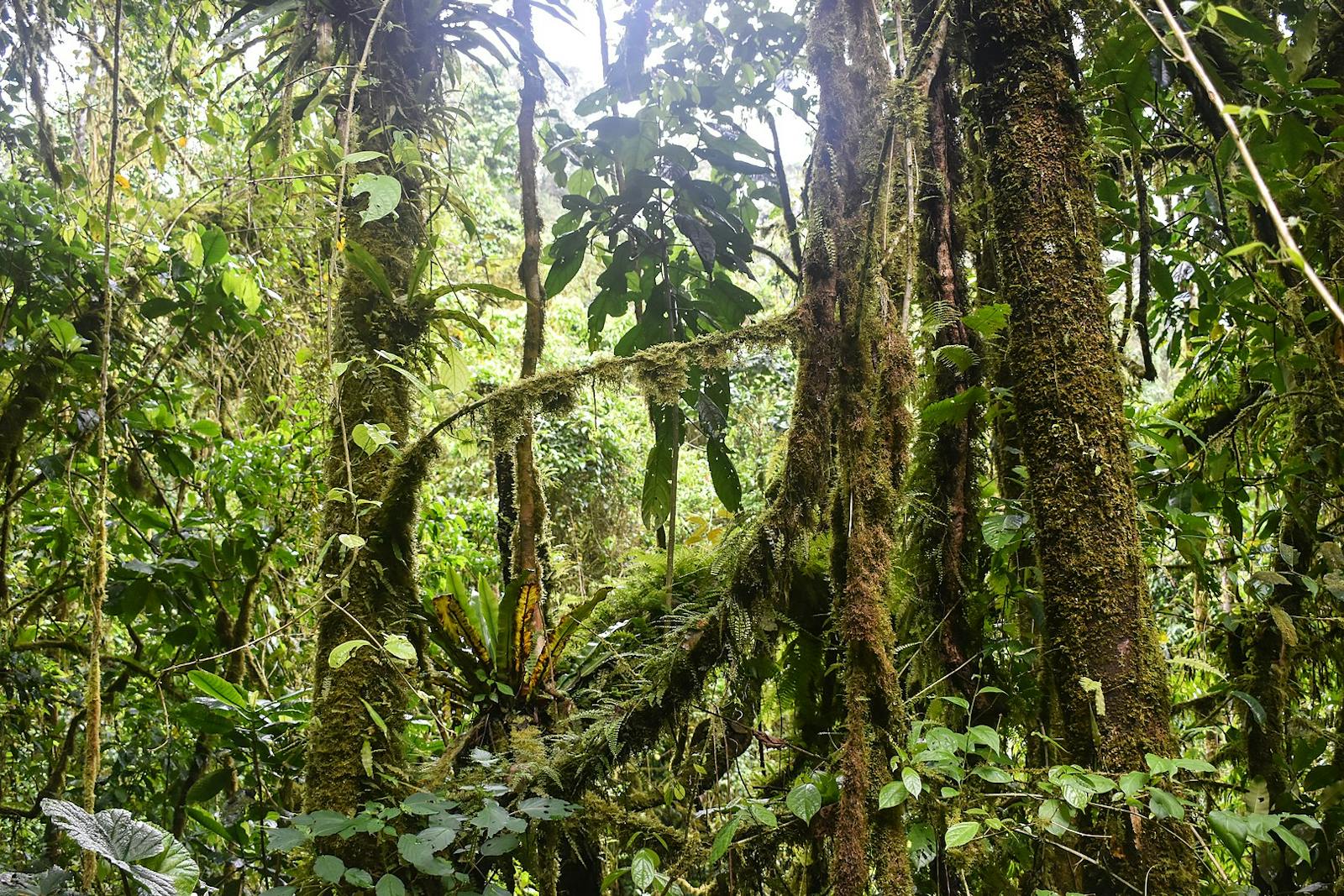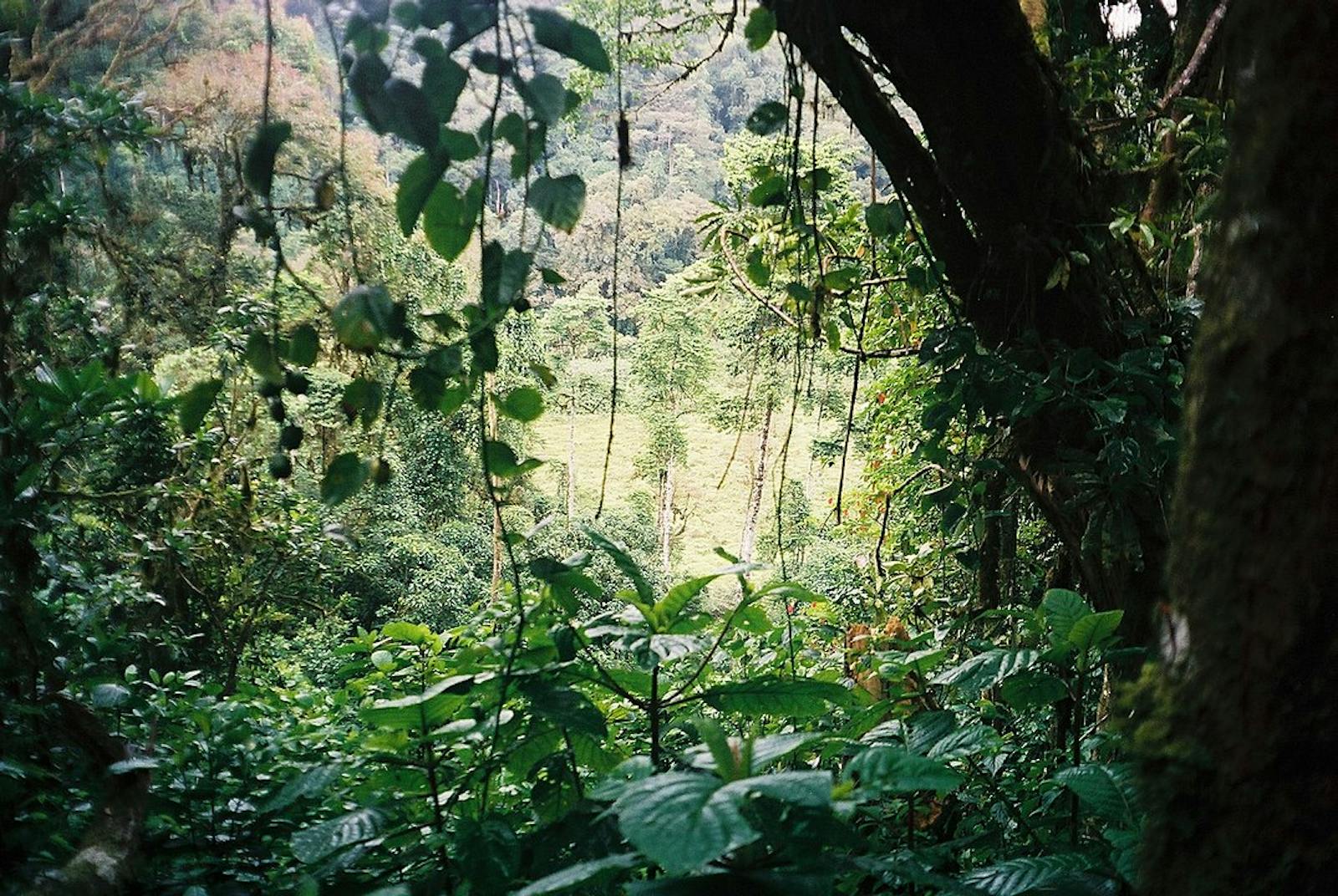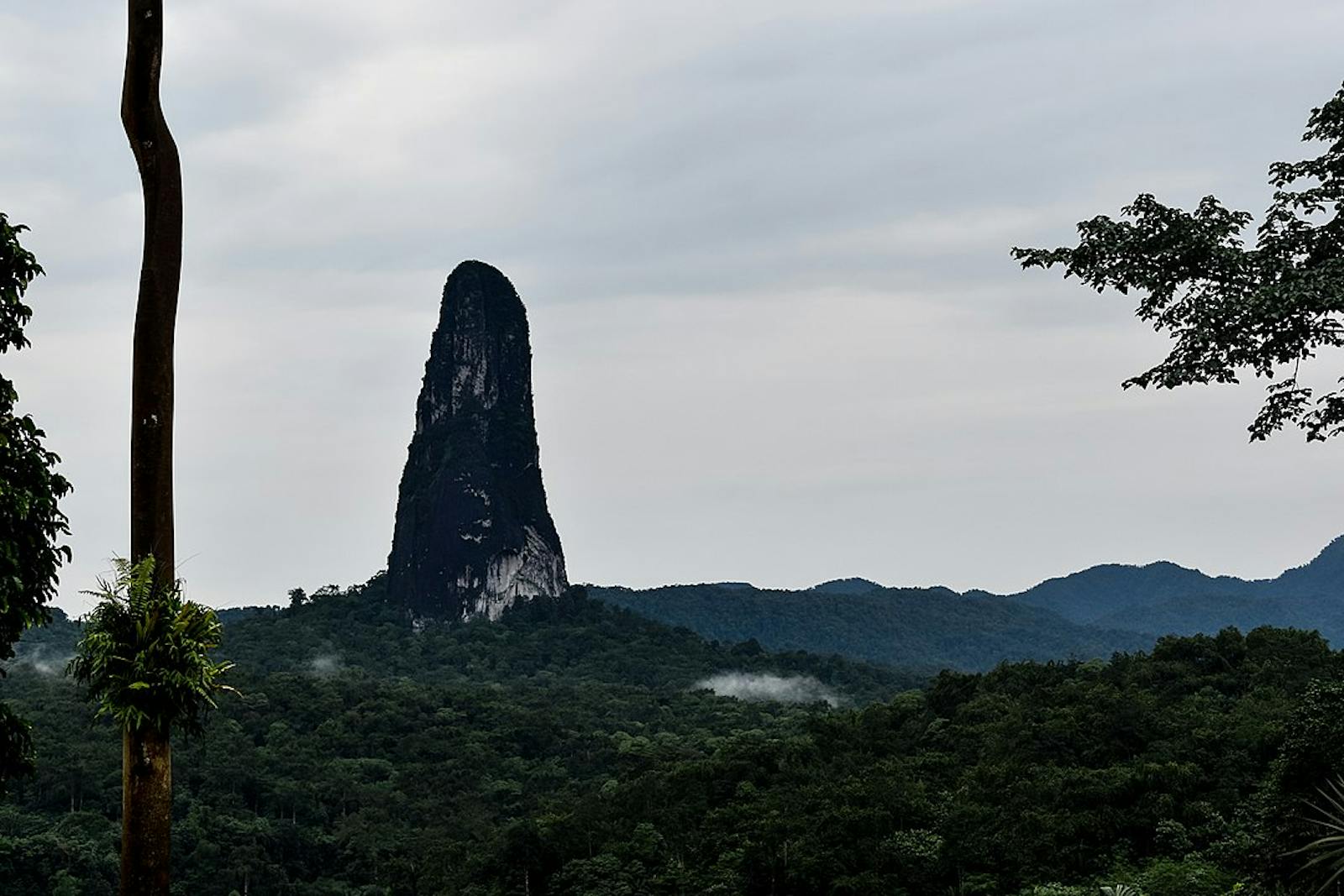São Tomé, Príncipe, and Annobón Forests
The ecoregion’s land area is provided in units of 1,000 hectares. The conservation target is the Global Safety Net (GSN1) area for the given ecoregion. The protection level indicates the percentage of the GSN goal that is currently protected on a scale of 0-10. N/A means data is not available at this time.
Bioregion: Gulf of Guinea Coastal Forests & Mangroves (AT17)
Realm: Afrotropics
Ecoregion Size (1000 ha):
104
Ecoregion ID:
27
Conservation Target:
100%
Protection Level:
3
States: Democratic Republic of São Tomé and Príncipe, Equatorial Guinea
The lush forests of this ecoregion envelop the islands’ inactive volcanic slopes and appear to drop straight in to the ocean. About 250 km off the coast of western Africa, this small island group is home to a remarkable number of unique species including the giant sunbird, the São Tomé grosbeak—the world’s largest canary—and giant begonias that can reach up to 3 m in height. Their noticeably larger sizes compared to their continental relatives are a classic example of island gigantism, possibly due to the reduced pressure of competition and predation on these insular habitats.
This ecoregion covers the three volcanic islands of Príncipe, São Tomé, and Annobon in the Gulf of Guinea, off the west coast of central Africa. Príncipe is the closest to mainland Africa and has an area of 128 km2. São Tomé lies further out and covers approximately 836 km2. Annobon is the furthest from the coast, with an area of 17 km2. All three islands are within the wet tropical belt. On São Tomé, annual rainfall ranges from 1,000 mm in the northeast to more than 4,000 mm in the southwest.
.jpg)
The flagship species of the São Tomé, Príncipe, and Annobón Forests ecoregion is the giant sunbird. Image credit: ©Thibaud Aronson, iNaturalist
Mean annual temperatures range from a maximum of 30 to 33ºC to a minimum of 18° to 21°C, with little seasonal variation and high humidity all year. The volcanic soils derived from basalts and phonolites are relatively fertile and have been used for plantation crops. The original vegetation of both islands comprised of lowland and montane forests on the wetter side of the islands, and mossy forest at the highest altitudes. The rain shadow side of the islands supported a drier forest type, which has been extensively cleared for farmland.
Endemism at the generic, specific, and sub-specific level is exceptionally high on these islands. The flora contains 37 endemic plant species on Príncipe, 95 on São Tomé and 20 endemic species on Annobon. Significant endemic radiations are found amongst several genera, such as Begonia and Calvoa. The giant endemic begonias Begonia crateris and Begonia baccata can reach 3 m in height. Another endemic plant, Leea tinctoria¸ belongs to the gram family Vitaceae.
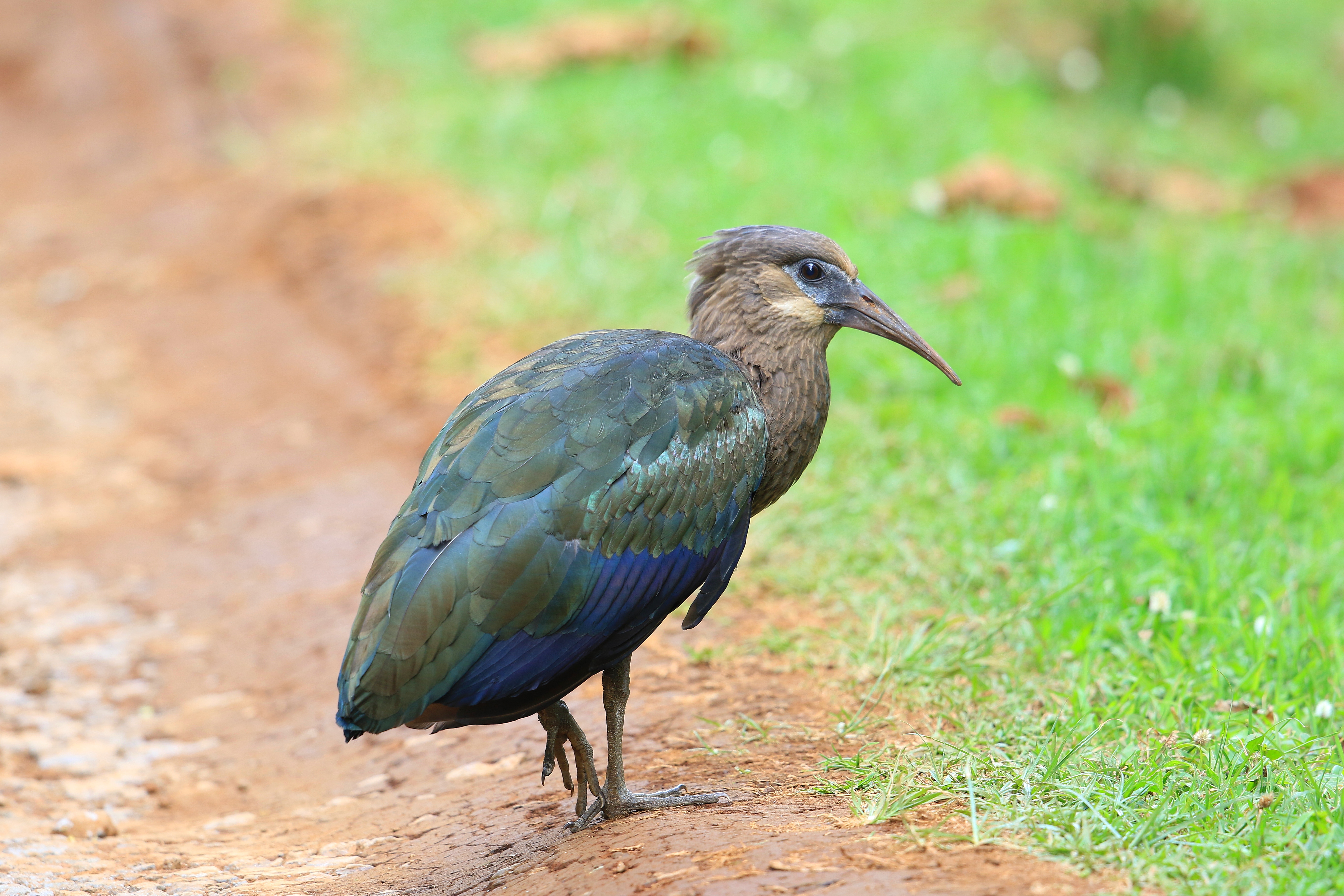
Olive Ibis. Image credit: Creative Commons
These islands are also highly important for bird conservation. Genetic evidence supports the split of the Gulf of Guinea thrush into two species: São Tomé thrush and Príncipe thrush. Four bird species were recently rediscovered after a lack of sightings for more than 60 years, namely the dwarf olive ibis, Newton's fiscal, the São Tomé short-tail, and the São Tomé grosbeak.
The islands have few indigenous mammals, and the São Tomé shrew is the only endemic terrestrial mammal. São Tomé has two endemic bat species, São Tomé Free-tailed bat and São Tomé collared fruit bat. Island adaptations have also resulted in dwarfism; the dwarf olive ibis is much smaller than other members of its genus.
There are around 40 km2 of primary forest on Príncipe, and 240 km2 on São Tomé. Although forests were heavily damaged in the past, there is regeneration to secondary forest in some areas. On Annobon, much of the forest, with the exception of the high peaks of Santa Mina and Quioveo, has been modified by humans but remains important for endemic species. The Island of Príncipe has recently been recognised as a UNESCO Biosphere reserve and proposals have been made to protect the remaining areas of primary forest on São Tomé and Príncipe as national parks, such as the Parques Naturais d’Ôbo. The entire island of Annobon was ratified as a protected area in 2000.
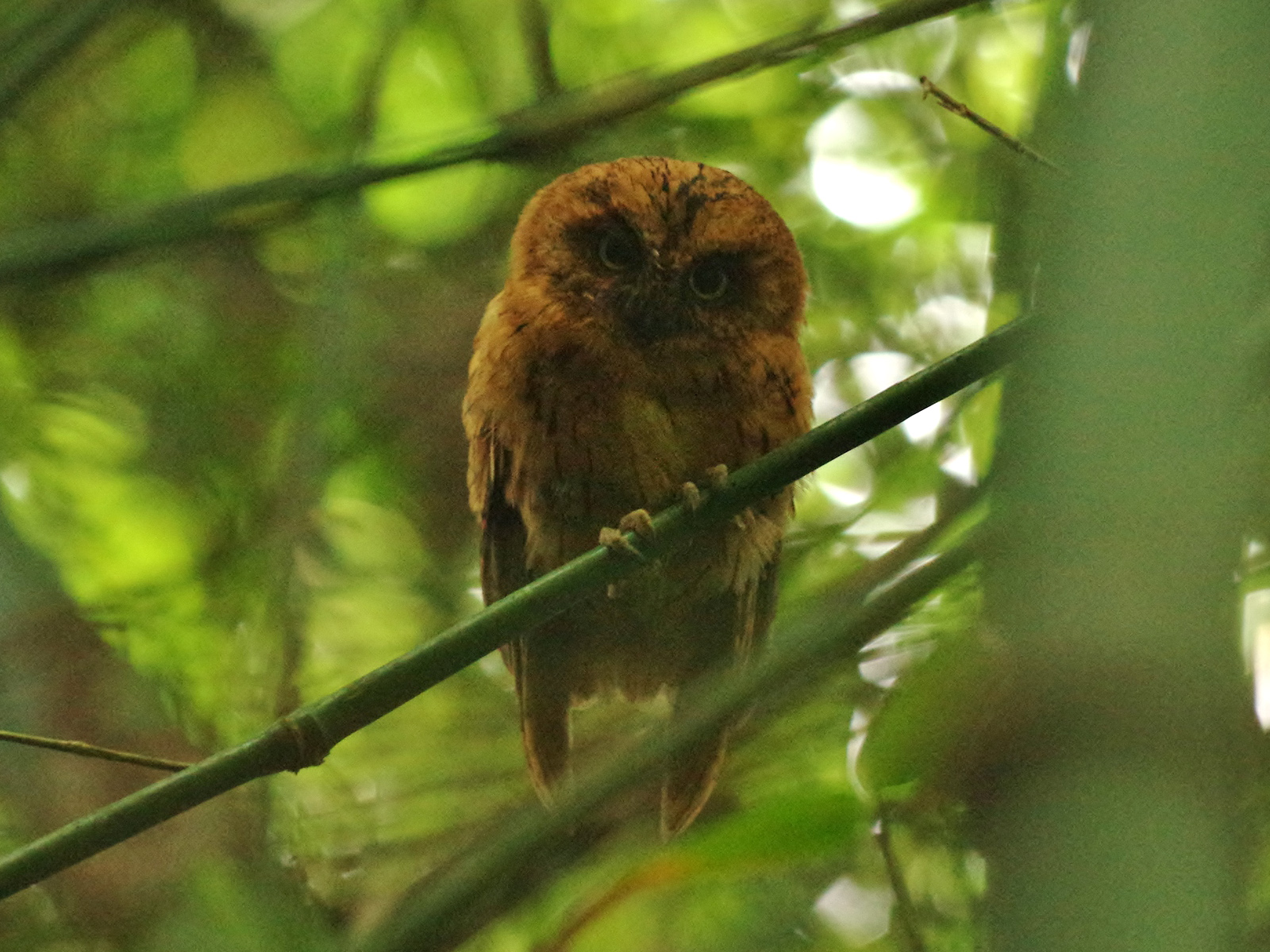
São Tomé scops owl. Image credit: Creative Commons
Large areas of forest were cleared on these islands for sugar, coffee and cocoa plantations during colonial periods. However, many endemic species adapted to the shade forest found in these plantations. After the 1930s, and especially following the nation’s independence in 1975, many plantations were abandoned, and there was some regeneration to secondary forest. Since the mid-1980s, land reforms have led to land conversion from coffee and cocoa plantations to market gardening.
Agricultural practices on Annobon have traditionally been based on a forest agricultural system that was less damaging to biodiversity than large-scale plantations. However, agricultural encroachment into the primary montane forest zones of Pico Quioveo and Pico Santa Mina remains a danger. The international pet trade in the African grey parrot, found on Príncipe, has been banned since 2016.
The priority conservation actions for the next decade will be to: 1) implement and progress the São Tomé and Príncipe International Species Action Plans for Critically Endangered bird species; 2) promote conservation of the forests and the sustainable use of its resources; and 3) build capacity with local partners to deliver an effective conservation programme.
Citations
1. Melo, M., Bowie, R.C.K., Voelker, G., Dallimer, M., Collar, N.J. and Jones, P.J. 2010. Multiple lines of evidence support the recognition of a very rare bird species: the Príncipe thrush. Journal of Zoology. 282(2), pp.120-129.
2. Flora and Fauna International. 2018. São Tomé and Príncipe. [Online]. [Accessed 12 January]. Available from: https://www.fauna-flora.org/countries/sao-tome-principe
3. Hilton-Taylor, C. 2000. The IUCN 2000 Red List of Threatened Species. Gland, Switzerland and Cambridge, United Kingdom: IUCN.

